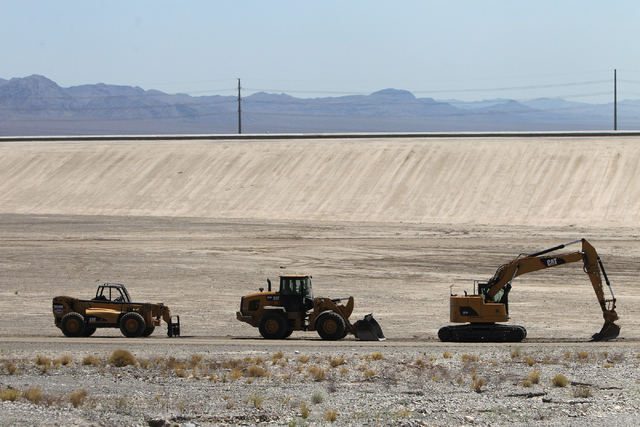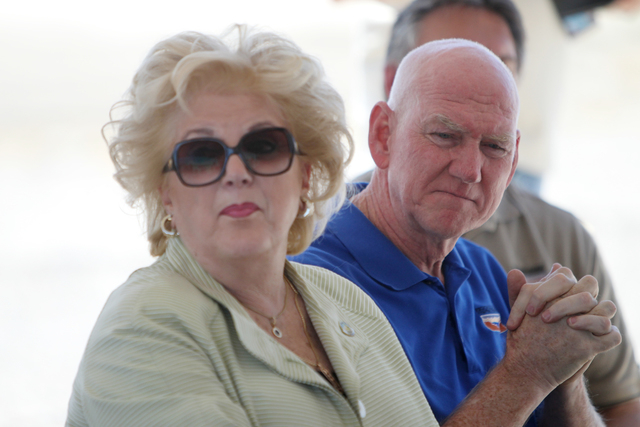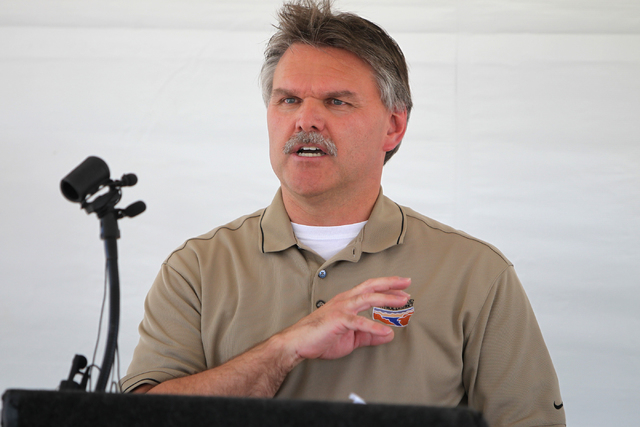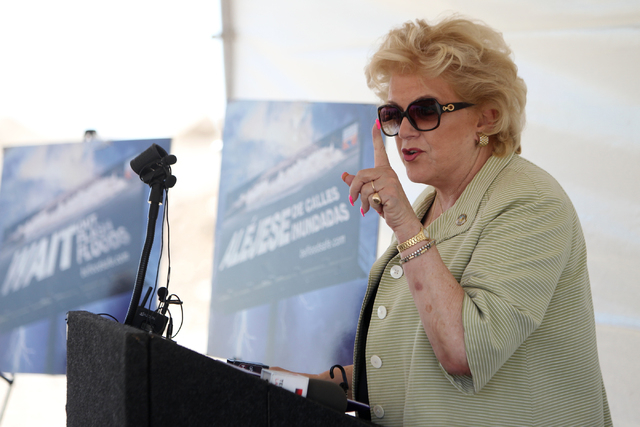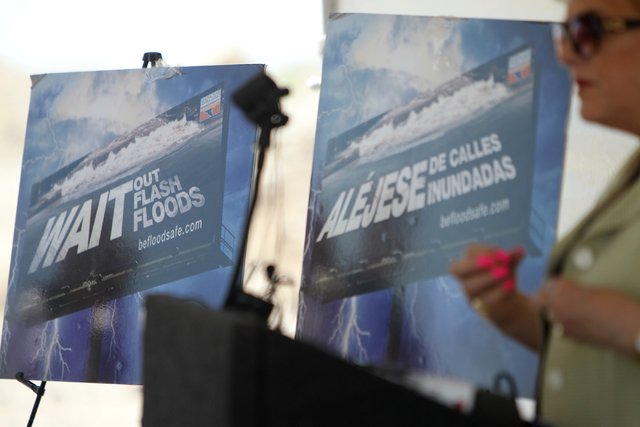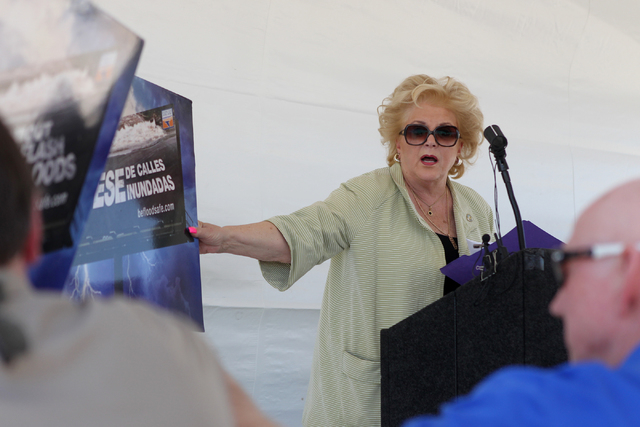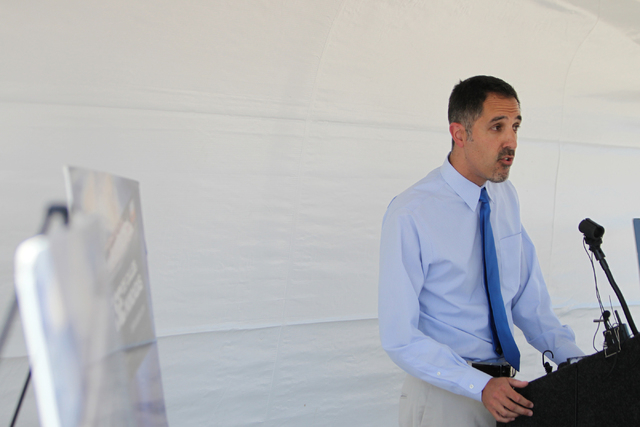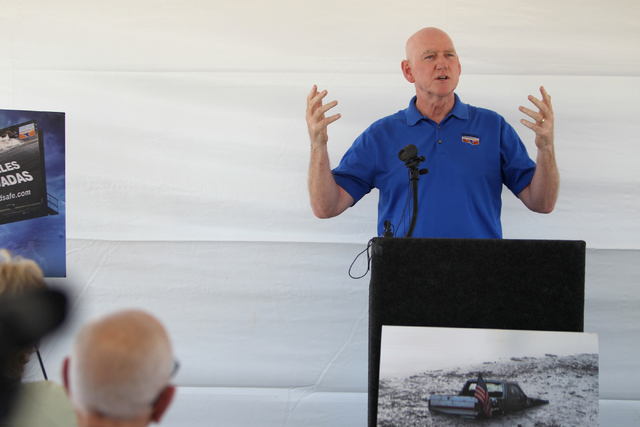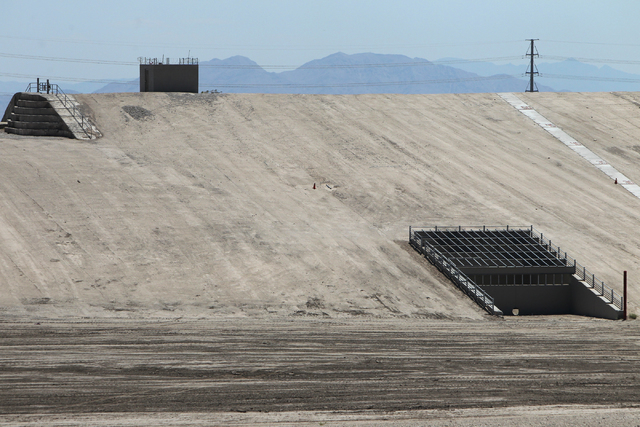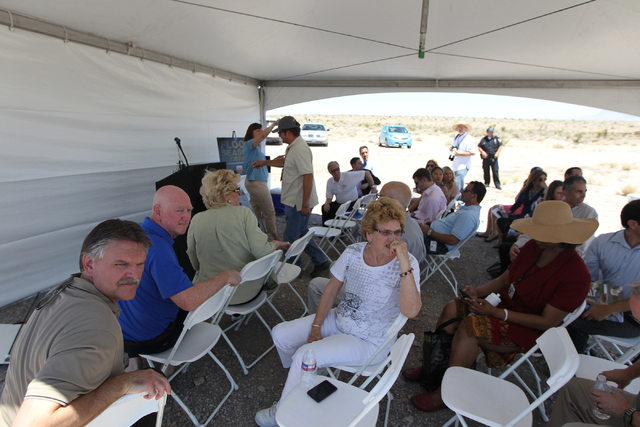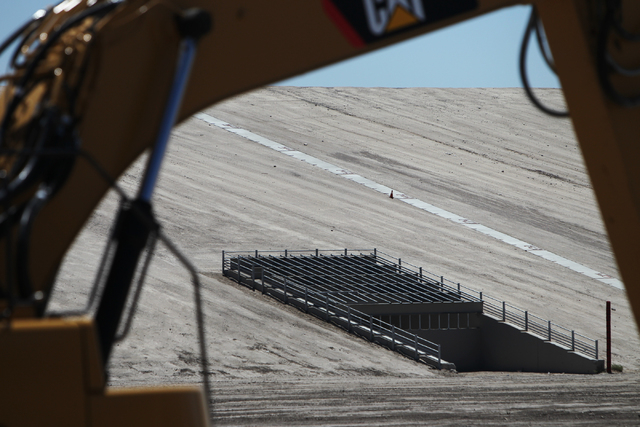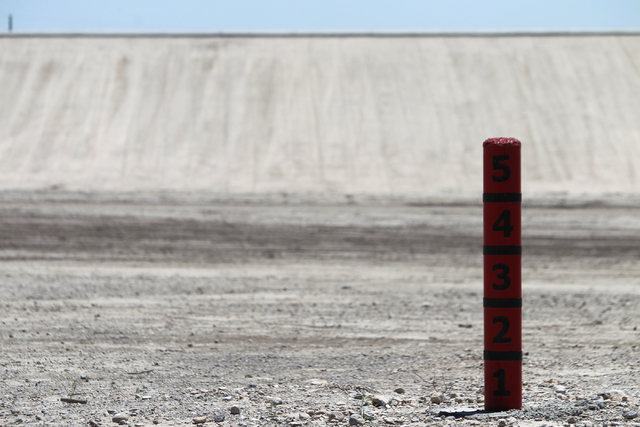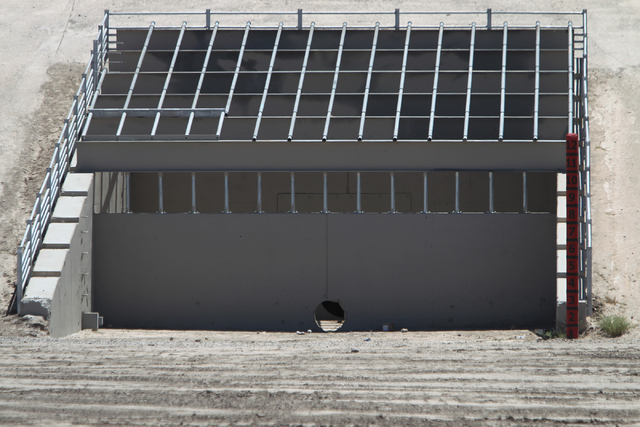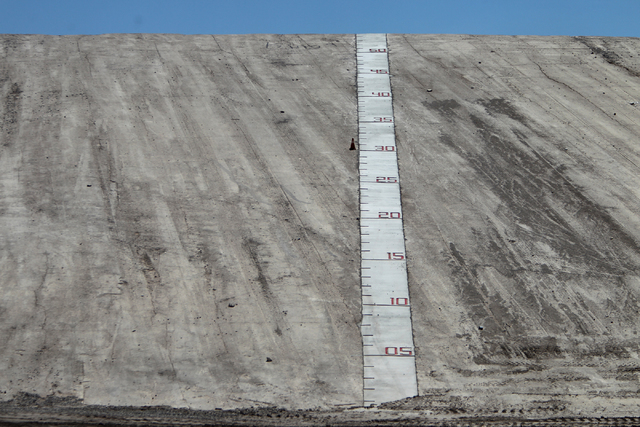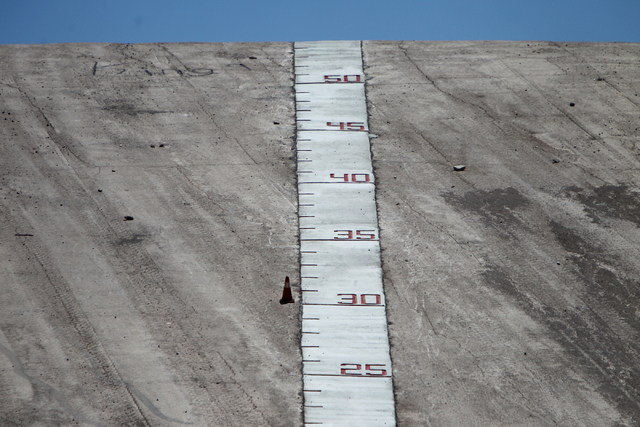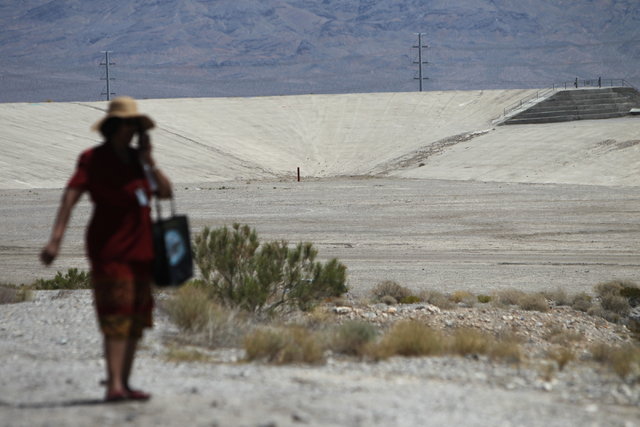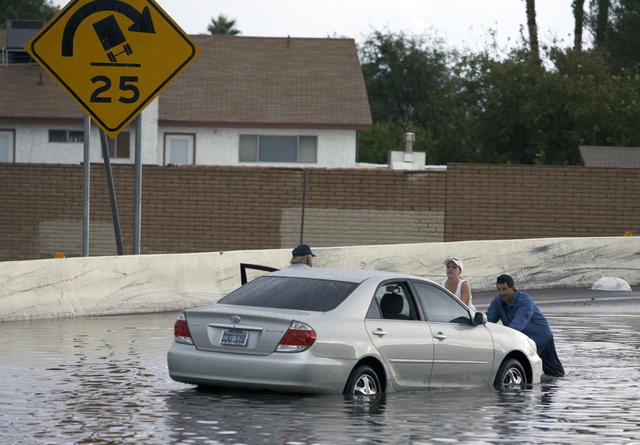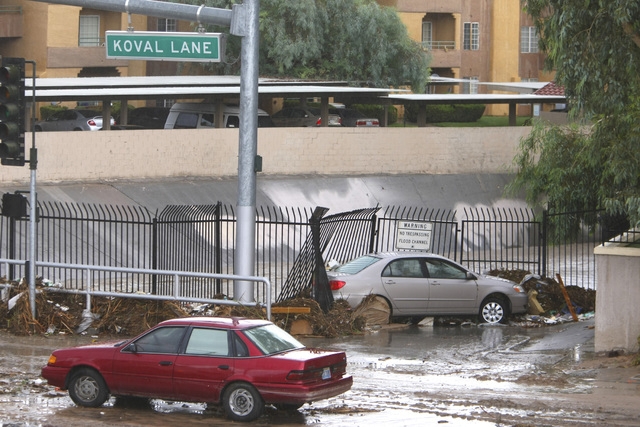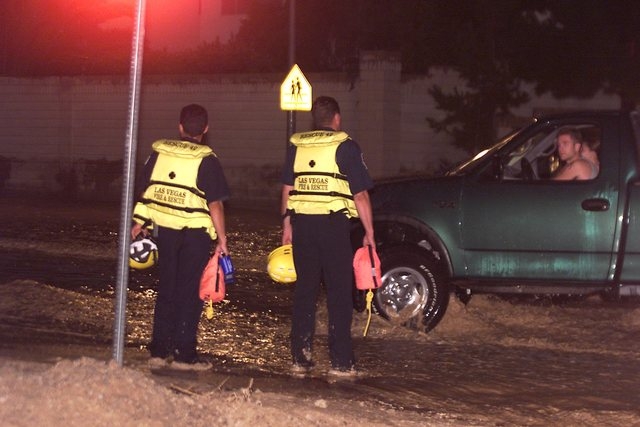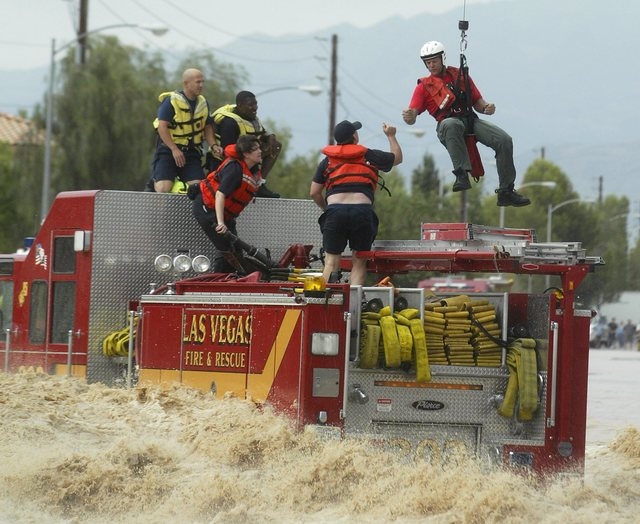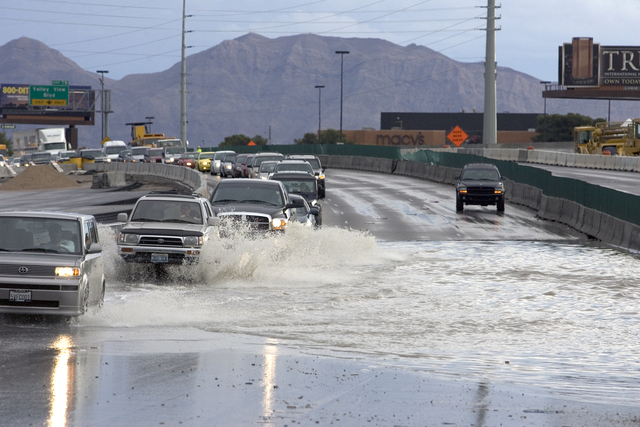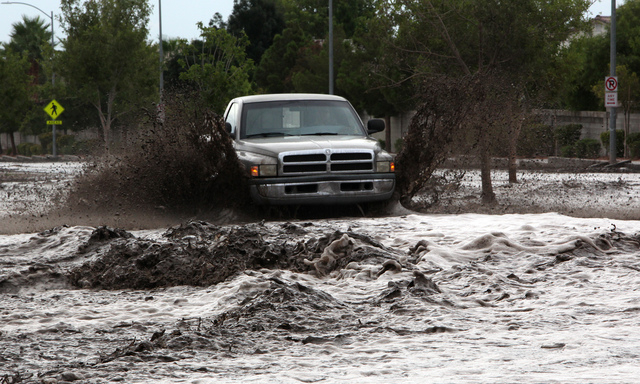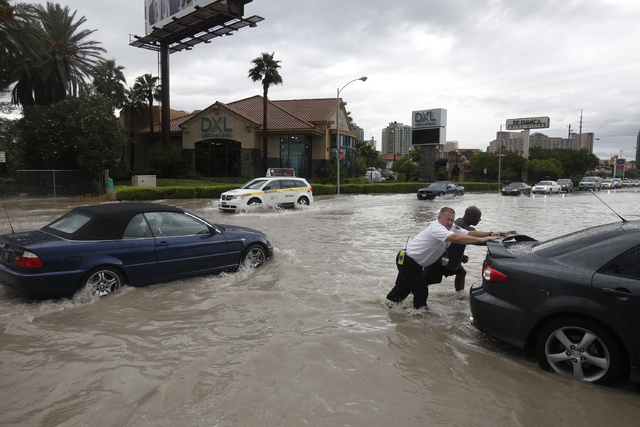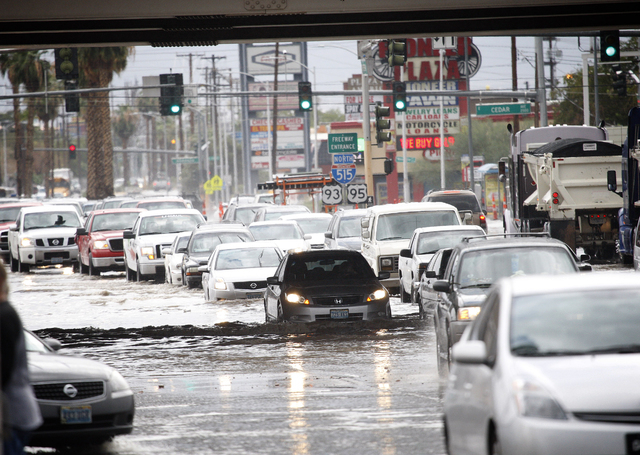2-year northwest Las Vegas flood control project is done
Las Vegas, Clark County and Nevada officials on Wednesday lauded the completion of a two-year project to improve flash flood control in the northwest valley, plus a law intended to deter drivers from braving floodwaters.
The Kyle Canyon Detention Basin, overwhelmed by flash floods in 2013 following the Carpenter 1 wildfire on Mount Charleston, has been connected to an expanded network of underground channels at an estimated cost of nearly $17 million.
“This demonstrates how responsibly and efficiently local governments work together to respond to a challenge,” Las Vegas Mayor Carolyn Goodman said.
The Carpenter 1 wildfire burned 28,000 acres in the Spring Mountains, destroying vegetation that held soil in place. Heavy rains immediately following deluged the Kyle Canyon Detention Basin, where Grand Teton Drive runs out, near Red Rock Canyon National Conservation Area.
Rain and debris overran the detention basin and washed down into northwest valley neighborhoods, causing an estimated $350,000 in damage.
The first leg of the expanded flood channels, a 4,000-foot-long boxed culvert running along Grand Teton from Hualapai to Tee Pee drives, opened in July 2014 at a cost of $6.2 million. The second leg, a 9,600-foot culvert along Grand Teton stretching from Durango Drive almost to Buffalo Drive, was completed two weeks ago at a cost of $10.7 million.
Larry Brown, chairman of the Clark County Regional Flood Control District, said completion of the culverts was “fantastic” news for the flash flood safety of northwest Las Vegans.
The flood basin’s prior “ability to capture [floodwater] and relieve it slowly, it was inconvenient,” Brown said. “But now if we had a similar event [to the 2013 floods], you wouldn’t even notice it.”
Between 6 and 8 inches of rain fell on Aug. 25, 2013, pouring 8,000 cubic feet per second of water, ash and debris into the detention basin, said Steve Parrish, general manager of the flood control district. That equates to more than 5,980 gallons per second.
By contrast, Parrish said, only 250 cubic feet per second exited the basin during the flood. For scale, 1 cubic foot is about enough water to fill up a basketball.
State Senator David Parks, D-Las Vegas, on Wednesday also talked up a law aimed at deterring drivers from the temporary lakes and rivers that flash floods create.
Drivers who bypass roadblocks put up for flooding will be liable for rescue costs if they, their passengers or their vehicle become stranded and require evacuation. The law, Senate Bill 156, takes effect July 1. SB 156 was passed in the most recent legislative session, which ended earlier this month.
For dramatic effect, Parks stood next to a blown-up photograph of a half-submerged pickup from the 2013 flooding. The driver had abandoned the truck and had to be rescued after ignoring barricades.
“Under this law, emergency responders can be reimbursed for their rescues,” Parks said. A second purpose of the law was “publicity,” he said. “If [danger to oneself] doesn’t resonate with you, maybe the expense of having to pay for your rescue will.”
Contact Knowles Adkisson at kadkisson@reviewjournal.com or 702-224-5529. Find him on Twitter: @knowlesadkisson.
RELATED
Flood project will cause traffic delays in northwest Las Vegas



